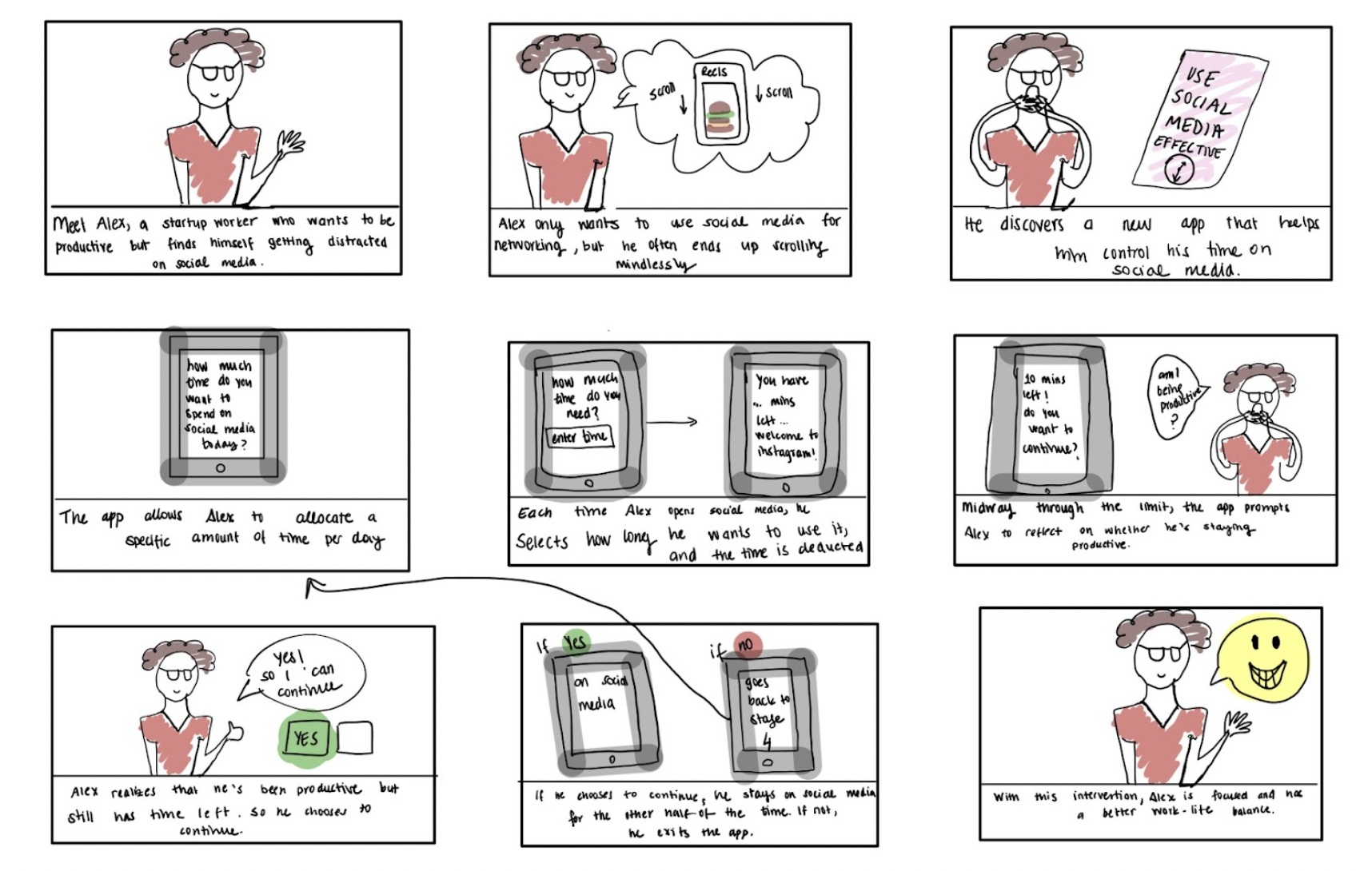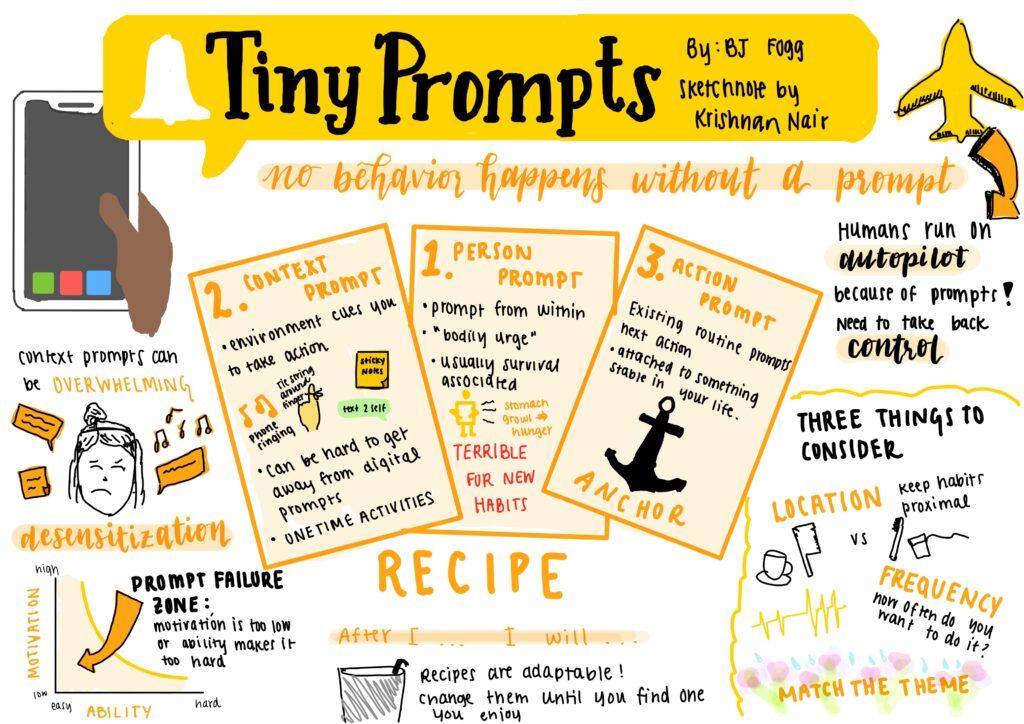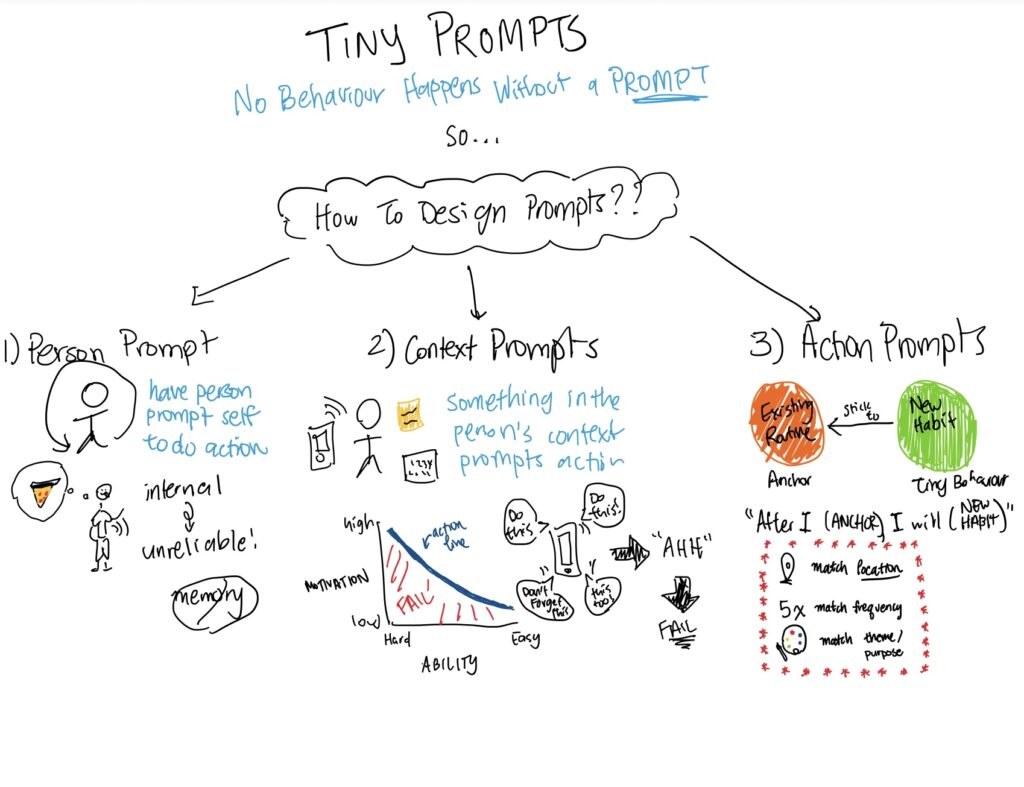Intervention Ideas
Description:
To replace the reflexive/unintentional use of social media, this idea aims to intervene by substituting the interaction on the phone with a small, short game. This is intended to shift user attention enough to get past wanting to use social media, and allow them to re-focus.


Pros:
- The games are a replacement for scrolling endlessly/break the repetition of the existing behavior but are not a drastically different behavior, lowering adoption resistance
- Games are timed/intentionally short, presenting a brief but achievable goal
- Users are offered additional follow-up activities to consider if
- Friction goes up after X number of games (users doing physical activities), allowing gradual change of behavior
Cons:
- The games themselves can be potentially addictive, so measures would have to be taken to prevent that (random games, no repeats in a given day, etc)
- The replacement might be TOO close to the original behavior, thus being less effective
- Some games/activities might be less effective for some; need to consider scope of game options

Pros:
- Encourages mindful social media usage since users are prompted to set a time limit, helping them be intentional about their screen time.
- Promotes self-reflection when there is the mid-session prompt which encourages users to think about whether they are being productive.
- It’s a user controlled experience. Users decide how much time they want to allocate, giving them a sense of agency.
- Influences gradual behavior change. Instead of blocking access right away, it allows for a structured reduction in screen time.
- Improves productivity and work-life
Cons:
- Users might get used to clicking “Yes” when prompted, reducing the app’s effectiveness.
- Frequent prompts could annoy users instead of helping them stay mindful.
- Users can still choose to continue using social media, which might not work for those needing stricter limits.
- Without external motivation, some users may ignore the feature.
- While it helps reduce excessive scrolling, it doesn’t address the root causes of digital distraction.
Description:
The Good Habit Jar is a social media intervention where users record notes and images about how they feel when doing alternative activities. When they open social media, it displays a collage of these memories to remind them how good they felt and encourage them to do something else instead.

Pros:
- Personal Relevance: The intervention uses the user’s own experiences and emotions, making it more meaningful and personally motivating than generic advice or warnings. The self-generated content creates a stronger emotional connection.
- Positive Reinforcement: Instead of focusing on the negative aspects of social media use, it emphasizes positive alternatives and good feelings, which is generally more effective for behavior change than negative messaging or guilt.
- Visual + Emotional Impact: Combining images with emotional notes creates a more powerful memory trigger than text alone. It allows quick, intuitive processing of multiple positive memories.
- Timing: The intervention occurs at a critical moment – right when users are about to engage with social media – making it more likely to influence behavior when decision-making is actually happening.
Cons:
- Effort Barrier: Users need to actively document their experiences and emotions, which requires extra effort. This could lead to low participation or abandonment of the practice over time.
- Habituation Risk: Users might start ignoring or quickly dismissing the collage after seeing it multiple times, reducing its effectiveness as an intervention tool.
Intervention Study
TARGET AUDIENCE AND BEHAVIOR
Our target audience is young professionals aged 18-35 who frequently use social media. Such a demographic relies on doom-scrolling as a default behavior during downtime, which can detract from opportunities for mindfulness and personal growth. We aim to focus on understanding their habitual use of social media and how it impacts their ability to engage in more fulfilling activities. Through this study, we hope to uncover ways to encourage healthier digital habits and more intentional use of time.
SCREENER
-
- Demographics:
- Age: 18-30s
- Location: anyone living in / pursuing a career in the United States
- Occupation: Working professionals or young adults (i.e. students or early-career professionals).
- Demographics:
- Experience with a specific product or behavior:
-
-
- Products: Mainstream social media, (i.e. Instagram, TikTok, Reddit, etc)
- Behavior: considerable phone and technology usage on those platforms
-
- Willingness and availability to participate:
-
-
- Time commitment:
- Must commit to participating in the study for 4 consecutive days (Monday to Thursday).
- Able to complete daily pings and dedicate approximately 5-10 minutes per day to logging reflections and answering questions.
- Time commitment:
-
- Exclusion Criteria:
-
- Under age 18
- Not previously employed
- Individuals who do not use social media regularly or who already practice mindfulness extensively.
- Participants working in market research, UX design, or related fields (to avoid bias)
Based on these, here is the set of questions for our screener:
- What is your name?
- What is your age?
- What is your employment status?
- Do you feel that you spend excessive time on social media?*
- On a scale of 1 to 5, how often do you find yourself on your phone?*
- On average, how many hours per day do you spend on social media platforms?*
- Which social media platforms do you use regularly?
- How often do you engage in mindfulness practices (e.g., meditation, deep breathing exercises, journaling)?
- On a scale of 1-5, how satisfied are you with your overall life balance?*
- During the study, we will decide with you a window of time, ex. 9am – 6pm, for study each day.
- Are you willing to participate in a 4-day diary study that involves responding to 6 short surveys per day?
- Do you have access to a smartphone or computer to complete online surveys throughout the day?
- Are you comfortable sharing information about your daily activities and social media usage for research purposes only?
- Is there anything else you’d like to share about your social media habits or interest in participating in this study?
If the participant moves forward, we will also send out a consent form listing who will have access to the data, etc., to be signed by the participant.
“GOOD HABIT JAR” STUDY DESIGN
Our diary study will focus on how users can replace habitual social media usage with more mindful and fulfilling activities through the “Good Habit Jar” intervention. The goal is to understand the context and thought process behind how users identify and engage with alternative activities instead of defaulting to social media as well as how these changes can impact their mood and overall satisfaction levels. We aim to answer the following key questions:
- Do people who use social media a lot feel less happy, engaged, or satisfied with their days compared to people who don’t use social media a lot?
- What alternative activities can users engage in instead of doom-scrolling, and how do these activities impact their mood and well-being?
- How do participants perceive their social media usage after being redirected to their “Good Habit Jar”?
- How does engaging in alternative activities influence their overall happiness and satisfaction during each day of the study?
For logistical data, we will be sending participants six pings per day at random intervals using a Google form. The study window starts early in the morning and extends to early evening to ensure participants have had enough time to engage in meaningful activities throughout their day. Each ping will prompt participants to log whether they used social media during the past two hours or engaged in an alternative activity. For the final ping, participants will be asked additional questions to summarize their overall social media usage and alternative activities engagement throughout the day. Participants will also submit screenshots of their social media screen time at the end of each day to compare with pre-study baseline data.
For content data, we aim to capture participants’ thoughts, feelings, and behaviors when they social media usage or engage in alternative activities. What triggered their social media use? How did it make them feel? If they chose an alternative activity, what was it, and how did it impact their mood?
| Day 1 | We’ll be meeting with study participants and briefing them on the logistics of the study. This involves establishing communication and rapport with the participants and answering any questions they may have. Participants will also set their primary work times to be pinged throughout the study. |
| Day 2-4 | Each day will be as follows:
Morning Reminder: Participants receive a motivational message encouraging them to replace social media use with alternative activities and log reflections in their “Good Habit Jar.” Pings throughout the day: participants will receive “pings” about what they’ve done in the past two hours. If they used social media: They will reflect on which platform they used and how it made them feel (stressed, neutral, or happy). If they chose an alternative activity: They log what they did and how it impacted their mood or satisfaction. Evening reflection: Participants will summarize their total social media usage for the day. Additionally, they will reflect on their most fulfilling activity and rate their overall satisfaction with the day on a scale of 1–10. Data will be collected and analyzed each day. |
| Day 5 | We’ll have a post-study debrief with the participant (if applicable here due to class pacing for the post-study interview). We will summarize and discuss things that stood out and ask questions for additional context as necessary. |
Data Collection Plan
- Send participants a link to a google form for each ‘ping’
- 1 ping every 2 hours, 6 pings total
- example: 10AM / 12PM / 2PM / 4PM / 6PM / 8PM
- Window of time starts later due to participants realistically having enough time to have possibly done something enjoyable by the start of the study each day
- Window of pinging time is also technically longer than our last study (which was 4 pings a day) because there is no start/end of day surveys (6 forms total), instead we will just add on a couple extra questions for the last ping at 8PM
- Also having the window end later gives our participants more time/opportunity to do something enjoyable after work
- Ping questions:
- Within the past two hours, have you used social media?
- If yes:
- For approximately how long did you actively use social media?
- What social media did you use?
- How did your social media usage make you feel?
- If yes:
- Within the past two hours, have you engaged in any activity that made you feel happy, satisfied, or otherwise content? Ex. walking a dog, reading a book, etc.
- If yes:
- What was the activity and why did you enjoy it?
- For how long did you engage in this activity?
- How has this activity impacted or changed your mood or perspective in your day?
- If no:
- What activities were you doing that did not make you feel happy, satisfied, or otherwise content?
- If yes:
- Last ping of the day (in addition to above questions)
- On a scale of 1 (not at all) – 5 (a lot), how much do you feel you used social media today?
- If rated above 1 (not at all): Consider a comprehensive review of your social media use today. How did social media usage make you feel? How did it impact your mood and attitude afterwards?
- Can you briefly describe how you feel about the things you accomplished today?
- What was your favorite or most enjoyable non-social media activity you engaged in today?
- Did responding to check-ins about enjoyable activities help you enjoy your day or non-social media activities more presently?
- Please rate your overall satisfaction with your day on a scale of 1 (terrible day) to 10 (amazing day).
- Have you sent your facilitator a screenshot of your screen time? If not, please do so now. (to remind participant unobtrusively)
- On a scale of 1 (not at all) – 5 (a lot), how much do you feel you used social media today?
- Within the past two hours, have you used social media?
Data Analysis/Review Plan
- Organize google form responses in a google sheet (1 tab per participant) as we progress in the study
- At the end of the study:
- Summarize for each participant what kind of trends were noticed as the happy activities, if there were any noticeable trends
- Observe their screen time before and after the study
- Compare their self-reported ratings of mindfulness, engagement, and happiness with their day-to-day on the first day versus the last (since the first day is essentially the closest we can get to a control)
- if the participant had been in our previous study, we can compare observed screentime patterns and trends between the studies, to see if the prioritization of mindfulness in daily activities actually impacted the user to use social media less
Other
Participant reminders – text message from facilitator who will be sending them the google form link
Check-ins – not necessary unless a participant has not been responding to many pings
Data submission – through a google form (see above)
Intervention Study Materials
We have an introductory document and discussion guide.
We additionally have a pre-study interview where we will collect data from participants to use during the study, as well as a post-study survey.



